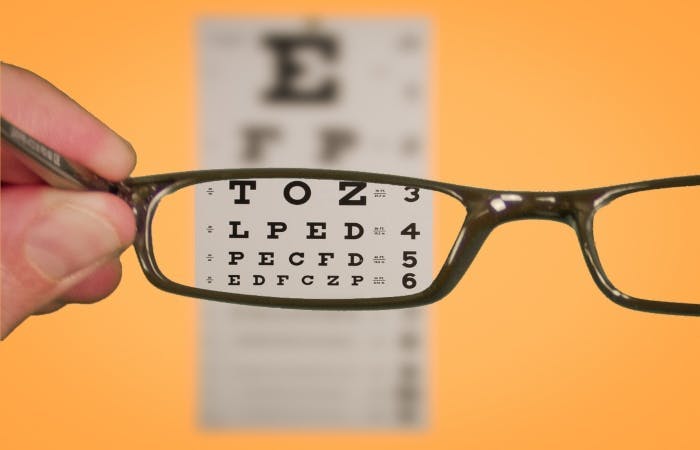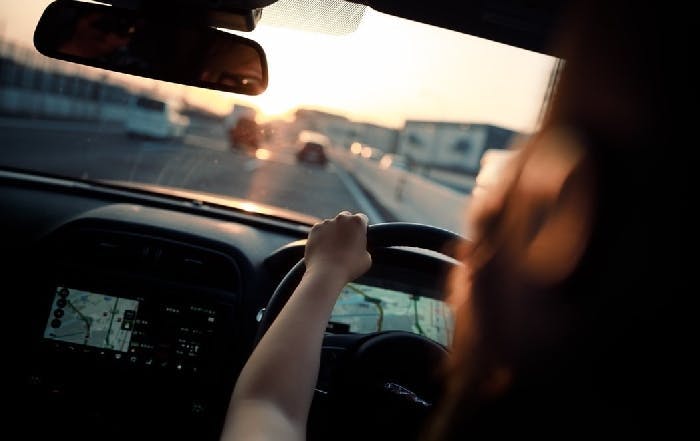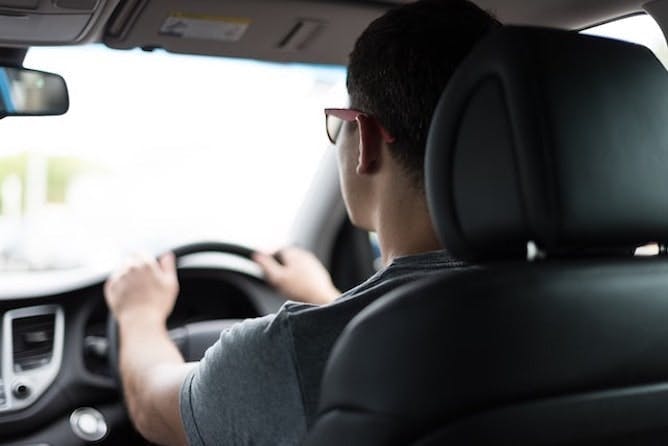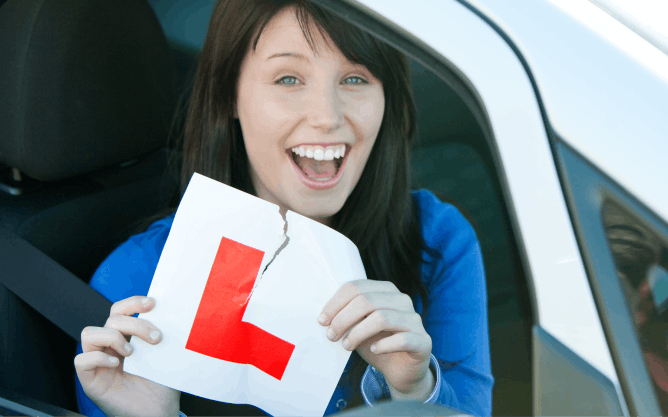
Nothing quite terrifies learner drivers as much as having to take the driving test. Even sitting behind the wheel for the first time pales in comparison to the prospect of a driving examiner watching your every move. Indeed, test day nerves are one of the biggest reasons why learners end up failing their test. Of course, as with anything else in life, once you actually know what to expect, it's nowhere near as scary. PassMeFast is well aware of this, which is why we've decided to break down exactly what happens in a driving test.
In this guide, we'll take you through the driving test from start to finish, clearing up any doubts you may have and helping to set your mind at ease. By the end of our guide, you'll know the structure of the test like the back of your hand!
What will happen on the day of my driving test?
Before your test
So, you're finally ready to take your driving test—or, at least, your instructor tells you that you're ready. Before we get into the nitty gritty of things, you'll want to read up on what to expect before and after your driving test. If you've not got the time, here's a quick summary of what you need to do before you set off for your test:
- Make sure you've got your provisional licence (you won't be able to take your test without it!)
- Bring your theory test pass certificate just in case the examiner wants to check it
- Bring your instructor's car (or your own) and decide whether you want your instructor to sit in with you
- Follow our top 10 tips to relax before your practical
Waiting around
It's advised that you arrive at your chosen test centre around 10 minutes before your test is due to start. Though it might seem obvious, you should triple check the date, time and location of your driving test. You will not get a refund if you end up showing up to the wrong test centre.
Whilst you'll want to set off early, just in case you get stuck in traffic, it's important that you don't arrive too early. If you do, you could end up getting in the way of other candidates taking their driving test.
Once you arrive at your test centre, you and your instructor will head on over to the waiting room. Your driving examiner will show up shortly and ask you to sign a couple of forms before you head outside. You'll undoubtedly partake in a bit of small talk with the examiner before the driving test begins.
The structure of the driving test
Now onto the interesting part! Though the driving test is a source of frustration and fear for many learners, it's pretty basic, at least, in regards to structure. Once you've left the waiting area, the examiner will briefly explain what's about to unfold.
The driving test itself is split into five simple sections:
- An eyesight test
- The 'show me, tell me' questions
- General driving ability
- A reversing manoeuvre
- Independent driving
Phew! It doesn't seem half as bad now, does it? If your answer is still yes, don't worry. You'll be sure to change your mind once we've broken down each section for you!
1. The eyesight test

Starting things off nice and easy, the driving test will officially begin with a quick eyesight test. The examiner will take you out of the test centre car park and ask you to read a number plate from 20 metres away (approximately 5 parked cars away from you), or 20.5 metres (if it's an old-style number plate).
As a driver, you need to have adequate eyesight in order to spot potential hazards, read road signs and much more. After all, if your eyesight isn't up to snuff, you could cause a serious accident on the road. As such, if you can't read the plate, the examiner will automatically terminate your test.
If you need glasses or contact lenses when you drive, then it's vital you remember them. Additionally, if you put on glasses for the eyesight test, you must wear them for the duration of the driving test. If you take them off, the examiner will terminate the test.
Please note: You could fail your practical test if you're unable to prove you have sufficient eyesight for driving. Make sure you don't get caught out by reading up on the eyesight rules for drivers!
2. Show me, tell me questions

Next on the agenda is the 'show me, tell me' section. You should have revised these questions by yourself and with your instructor well before your driving test. You will only be asked two questions in total: one 'show me' question and one 'tell me' question.
The examiner will ask you a 'tell me' safety check question before you actually start driving. Just think of it as a bit of a warm up before you get stuck into the driving part of the test! Testing your multitasking skills, the 'show me' question will be saved for when you're actually driving.
Not entirely familiar with the 'show me, tell me' questions? We'll give you a quick run through of all the potential questions that could crop up on your test. If you want to revise this section, head on over to our guide to the 'show me, tell me' section.
Tell me questions (before you set off)
1. How would you check that your brakes are working before starting a journey?
2. Where would you find information for your car's recommended tyre pressures and how they should be checked?
3. How would you make sure your head restraint is correctly adjusted in order to provide protection in the event of an accident?
4. How would you check that your tyres have sufficient tread depth and are in good condition
5. How would you check that your car's headlights and tail lights are working?
6. How would you know if there was an issue with your anti-lock braking system (ABS)?
7. How would you check that your car's direction indicators are working?
8. How would you check that your car's brake lights are working?
9. How would you check that the power-assisted steering is working before setting off?
10. How would you switch on the rear fog light(s) and when would you need to?
11. How would you turn your headlights from dipped to main beam and how would know when the main beam is on?
12. Open the bonnet and tell me how you would check the engine has sufficient oil
13. Open the bonnet and tell me how you would check the engine has sufficient engine coolant
14. Open the bonnet and tell me how you would check you have a safe level of hydraulic brake fluid
Show me questions (whilst you're driving)
1. When it's safe to do so, can you show me how you would wash and clean your rear windscreen?
2. When it's safe to do so, can you show me how you would wash and clean your front windscreen?
3. When it's safe to do so, can you show me how you would switch on your dipped headlights
4. When it's safe to do so, can you show me how you would switch on the rear demister?
5. When it's safe to do so, can you show me how you would operate the car horn?
6. When it's safe to do so, can you show me how you would demist the front windscreen?
7. When it's safe to do so, can you show me how you would open and close the side window?
Don't worry if you're a bit shaky with the questions—if you get one or both wrong, it will only count as a minor driving fault.
3. General driving ability

Now we're getting into the slightly more difficult part of the test: the driving itself. Overall, though, this section shouldn't be much different from when you're driving with your instructor or taking a mock test. Though it can be daunting having a driving examiner peering over shoulder, they're not going out of their way to fail you.
The examiner will direct you out of the test centre and take you on a test route that will contain a variety of road types and traffic conditions. It will last around 20 minutes or so. Whilst you'll undoubtedly be put through your paces, you shouldn't struggle too much. Features you can expect include:
- Urban and residential areas: moving from one to the other will test your ability to adapt to changes in speed and traffic conditions.
- Junctions: from roundabouts to crossroads to T-junctions, the examiner will be keeping an eye on your observation skills.
- Dual carriageways: testing your ability to adapt to high-speed situations. Motorways will not feature on your test.
The entire point of this section is to make sure that you're a safe driver who is aware of the rules of the road and does not pose a threat to other road users. During this section, the examiner will ask you to pull over at least twice. Not only will you be expected to pull over and move off from the side of the road, you might also be asked to complete a hill start and move off from behind a parked vehicle.
The emergency stop
The examiner might ask you to demonstrate an emergency stop during this section. 1 in 3candidates are asked, so you should make sure you're familiar with the procedure, just in case. You will be given some warning prior to the examiner asking you to complete the emergency stop. It will sound something like this:
“In a short while, I will ask you to demonstrate an emergency stop. I will give you the signal, “stop”, and raise my hand. When you see this, you will need to stop as quickly and as safely as you can. You don't need to worry about looking around, I will ensure it is safe to carry out the manoeuvre before asking you. Do you understand?”
If you're not entirely comfortable or familiar with the procedure, you can get the full lowdown in our guide to the emergency stop. Alternatively, if you want to put your reflexes to the test, try out the PassMeFast emergency stop game.
Forget your nerves
Whilst it's rather nerve-wracking having an examiner watch your every move, you should try to shrug it off as best you can. Examiners know full well that learners will be far more nervous during the driving test than they would be when driving with their instructor or unsupervised. So, they won't hold it against you too much if you make a silly mistake here and there.
Additionally, even if you're convinced you've failed during your driving test, you won't actually know until you get back to the test centre. So, keep calm and try to tackle the general driving section as you would with your instructor.
4. Reversing manoeuvres
Ah, driving test manoeuvres. Nothing quite sparks as much dread as this particular section of the driving test. Unfortunately, no matter how much you dislike carrying out manoeuvres, the driving examiner will still ask you to demonstrate one during the general driving section.
There are three reversing manoeuvres in total. We'll give you a brief overview of each one in the tables below…
Manoeuvre #1: Pulling up on the right
Description: You'll be expected to pull up on the right-hand side of the road, reverse back for 2 car lengths and then rejoin traffic.
Example instructions:“I'd like you to pull up on the right when it's safe to do so. Then, reverse back for 2 car lengths, keeping close to the kerb”.
Step-by-step guide: Manoeuvre guide: pulling up on the right

Manoeuvre #2: Bay parking (forward or reverse)
Description: You'll be asked to either drive in and reverse out of a parking bay (forward bay parking), or reverse in and drive out of a parking bay (reverse bay parking).
Example instructions: Forward bay parking: “I'd like you to pick a parking bay to drive into. Once you've done so, reverse out and continue on.”
Reverse bay parking: “I'd like you to pick a parking bay to reverse into. Once you've done so, drive out and continue on.”
Step-by-step guide: Manoeuvre guide: bay parking

Manoeuvre #3: Parallel parking
Description: You'll be asked to park your vehicle parallel to the road, typically in a line of other parked vehicles.
Example instructions: “I'd like you to stop before we reach the next parked car. Then, drive and stop next to the car ahead. Once you're ready, reverse into the spot behind the car and park parallel with the kerb.”
Step-by-step guide: Manoeuvre guide: parallel parking

5. Independent driving

We're almost at the finish line now. Once you've finished the general driving section, you'll move onto independent driving. As with the previous section, this will last around 20 minutes. During this time, you will be expected to drive whilst following directions from a sat nav—with a route pre-determined by the examiner. 1 in 5 learners will be asked to follow the traffic signs for a certain location instead.
Instructions will sound something like this:
- Sat nav: “Once we set off, I'd like you to drive for a distance independently. You will follow a series of directions from the sat nav. You will continue to follow them until I direct you otherwise. Set off when ready.”
- Traffic signs: “I'd like you to drive independently. You will need to follow the traffic signs for location name. Continue to follow the signs until I direct you otherwise. Set off when ready.”
Before you start panicking, you should know that you won't be punished for taking a wrong turn or forgetting a direction. The independent driving section isn't testing your memorisation skills. It's merely testing your ability to drive safely and confidently—following the rules of the Highway Code—without the intervention of a third party.
If you ever take a wrong turn, or you're unsure of where you're going, you can ask the examiner to repeat themselves.
Back at the test centre

The route will eventually lead you back to the test centre. Once you get there, you'll be asked to park—in any spot—and stop the car. The examiner will then take a few minutes to complete their feedback sheet and tot up any driving test faults you might have accumulated. If you receive no major faults and fewer than 15 minor faults, you will have passed your test. If this happens, the examiner will give you your test pass certificate and send off for your new licence.
If you failed, it's important that you don't throw away the feedback sheet in a fit of rage. The advice that you're given here will be instrumental in helping you pass the test the next time around. Just think about it. If you picked up the most faults with observations at junctions, you know what to work on the next time around. You might even want to try a refresher course to get yourself up to speed!
Getting ready to take your practical test? Read up on these handy resources:
- How to prepare for the driving test: tips and tricks
- How to impress your driving examiner
- 10 bad driving habits you should stop right now
- When will I be ready to take my driving test?
FAQs
1. Can I take the driving test in my own car?
Yep! There are a few stipulations, however. For starters, you need to make sure that your car meets the DVSA's strict guidelines. You can find out more in our guide to taking the practical test in your own car. Additionally, you'll need to make sure you have insurance cover in place for the test.
2. How can I book my driving test?
You can use the DVSA's test booking service. Alternatively, if you'd like to speed up the process and avoid long waiting times, you can get PassMeFast to book you a fast-track practical test!
3. Is it easier to pass in manual or automatic transmission?
If you look at manual vs automatic pass rates, you'll see that pass rates tend to be higher for those taking manual tests. That being said, the driving test is down to your own ability. So, you shouldn't really depend on the pass rates to determine which transmission you should learn to drive in.
4. Can I refuse to demonstrate a manoeuvre?
Well, you could, technically. Of course, if you actually want to pass, then no, you won't be able to refuse to demonstrate a driving test manoeuvre. If you refuse, the examiner is within their rights to terminate the test. You are allowed to take your time when demonstrating a manoeuvre (within reason), so relax and just take it step-by-step. It's not rocket science!
5. Could I fail for not answering the 'show me, tell me' questions correctly?
Nope! If you get one or both 'show me, tell me' questions wrong, the examiner will give you one minor fault. Don't use this as an excuse to forgo revising the questions, however. Minor faults can add up quickly, and if you accumulate too many, you'll fail.
6. Do driving examiners have a pass/fail quota?
Contrary to popular driving test myths, examiners do not have a pass or fail quota. Just think about it. If they fail you intentionally, they'll only have to watch you come in for another test in the near future anyway. Examiners already have enough learners to deal with; they won't intentionally add to their busy pile!
7. I'm really dreading my driving test. What can I do?
For starters, you should remind yourself that your driving instructor wouldn't let you go in for your practical test if they didn't think you were ready for it. If that's not enough for your nerves, you can follow our step-by-step guide to avoiding test day nerves.
8. Am I too old to pass the driving test?
No! Whilst young drivers do have an advantage when it comes to the driving test, that certainly doesn't mean older drivers don't stand a chance. If you work hard enough, it will pay off eventually. Don't believe us? Read up on why age doesn't matter with the driving test.
9. How long is the driving test?
In total, the driving test will last approximately 40 minutes. The general driving section will be 20 minutes, as will the independent driving section. If you're held up in traffic, the examiner will likely cut the route short in order to get back to the test centre within this timeframe—they've got other tests after yours, after all!
10. When do I get my full driving licence?
Someone's impatient! Once you've passed your driving test, you will hand over your provisional licence to the examiner, who will send off for your full driving licence. You'll receive this in the post within 3 weeks. Don't worry—you don't have to wait for it to arrive to start driving!
11. Can I drive home after passing the test?
Technically, yes, you can. As you're no longer a learner driver, however, you will need full car insurance cover in place in order to drive. So, if you're driving your own car, you'll need a policy in place for when you pass. If you want to keep things simple, we'd advise you to let your instructor drive you home. That way, you don't have to worry about insurance!
12. What happens if I fail my driving test?
Well, you'll need to wait 10 working days until you can take your next practical test. After that, however, you can take a new test whenever you'd like. Before you get back behind the wheel though, we'd recommend you take a look through our guide on what to do when you fail your practical for some handy advice.
13. How many times can I retake the driving test?
As many times as you need! There's no cut off point in place, so you could, in theory, take hundreds of driving tests. Of course, if you're coming up on your third or fourth attempt, we'd recommend taking a refresher course to help you iron out those bad habits and get your hands on a full driving licence.
14. What happens after I pass my driving test?
It depends entirely on you. Your next steps might be to take a Pass Plus course to further advance your skills and confidence. Alternatively, you might want to start looking into buying your own car. If you're not sure what your next steps should be, consult our guide to what happens after learners pass the driving test.
15. What happens if my driving test is cancelled?
If you've shown up to your test centre only to be told that your practical is no longer going ahead, you can claim for out-of-pocket expenses. Of course, this depends on whether your test has been cancelled on short notice and what the reason was for the cancellation. You can find all the answers you need in our article on how to make a claim for a driving test cancellation.
16. I don't agree with the examiner. Can I appeal my result?
Yes, you can. If you fail your test and you feel as though the examiner was unfair—or displayed some sort of a bias—you can appeal your driving test. Of course, even if the DVLA sides with you, you will only receive a free retest. You will not be able to have the outcome of the test changed.
17. Should I take my driving instructor on my driving test?
It's entirely up to you. No-one will force you to take your driving instructor on your test. So, if you don't feel comfortable having them there, they can simply wait at the test centre. Of course, you might find that having your instructor with you will help create a more relaxing atmosphere. Be sure to make up your mind—and tell your instructor—well before your test date.
18. Will I fail the driving test if I stall?
It depends really. If you stall during your driving test and react poorly—panicking and potentially endangering other road users—you will undoubtedly end up with a major fault. If, on the other hand, you calmly restart the car, make your observations and continue on your way, you'll end up with no more than a minor.
Subscribe for driving advice, offers & more
We'd love to let you know about our courses, news and offers via email. You may unsubscribe at any time.
Star Genie Limited trading as PassMeFast. Company number 10093359
Copyright © 2024 owned by Star Genie Limited
PassMeFast, Blue Tower, MediaCityUK, Salford, M50 2ST

